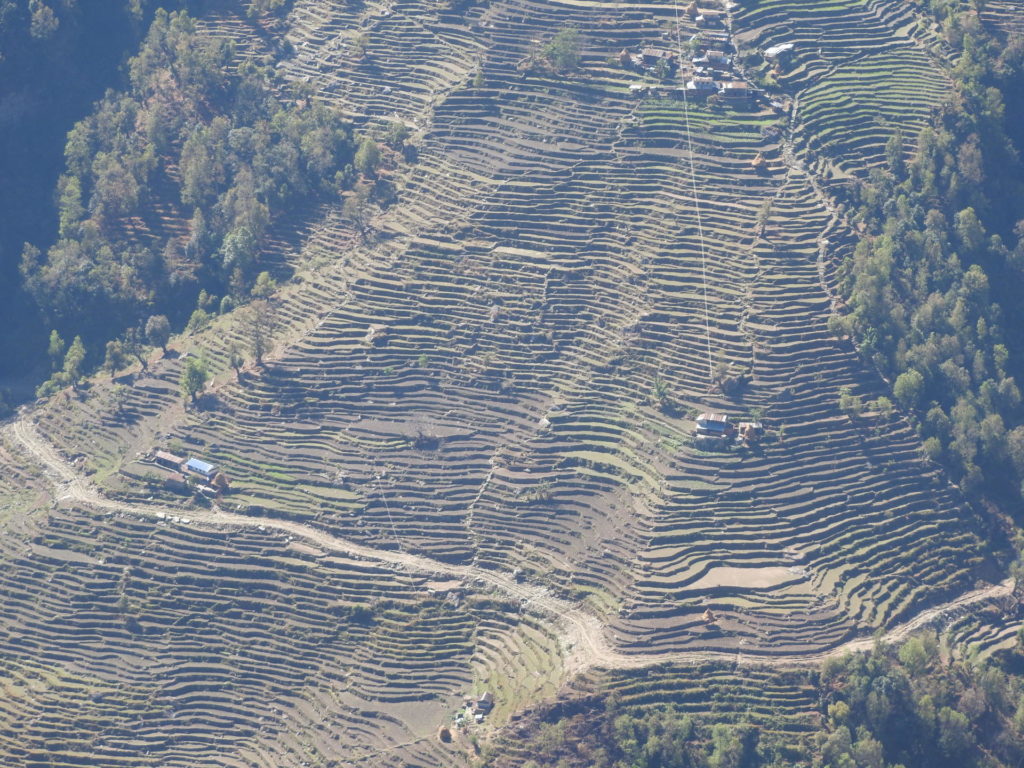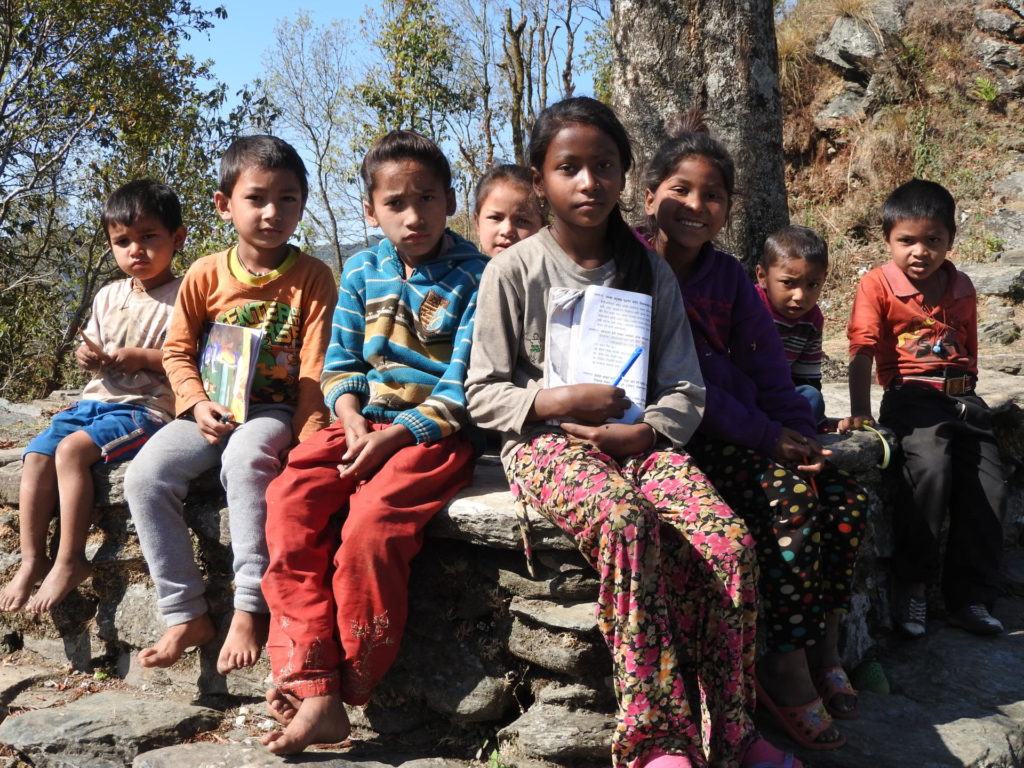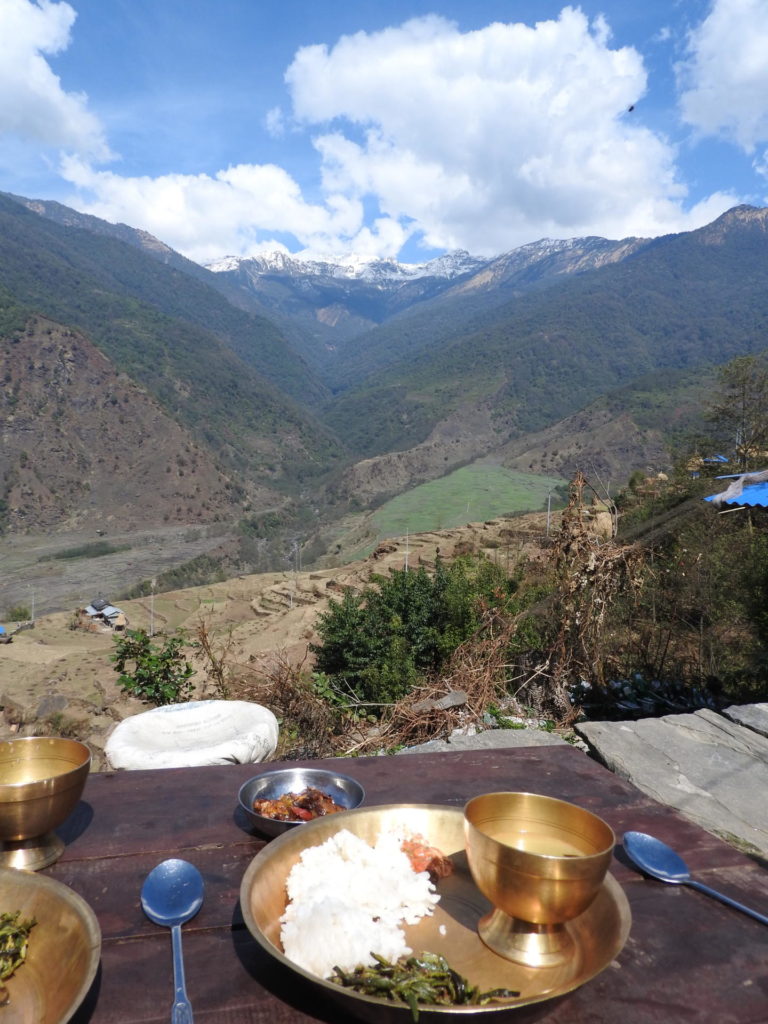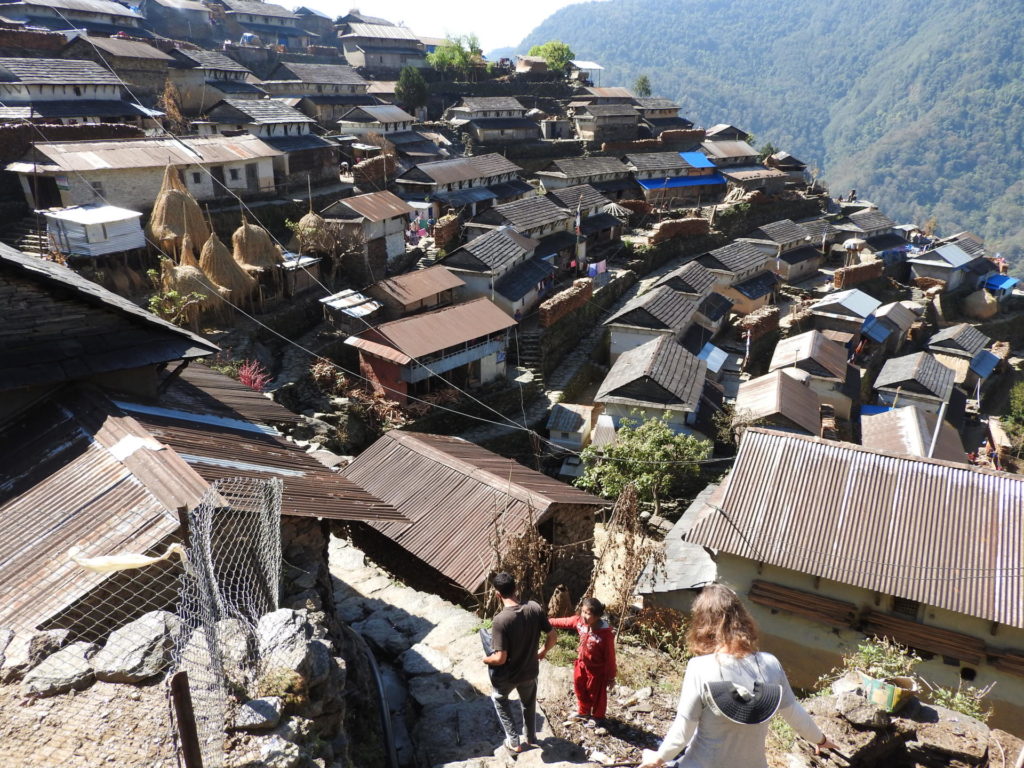An afternoon storm sends us scuttling under the eaves of a sari shop and clears the road in Besi Sahar. Only a few buses trundle over the uneven stone surface of the road in this mountain town, the starting point for many of Nepal’s most popular treks, including the Gurung Heritage Trek.

“It’s weird to have a thunderstorm this time of year,” says Eli Amkraut, a friend who will guide my husband and I along a section of the Gurung Heritage Trek near his home. Along this 80-kilometer trail in the Annapurna Region, hikers pass through a series of traditional villages populated by the Gurung, one of Nepal’s native people. Our shortened version of this five to seven-day trip promises stunning scenery and the chance to meet and talk with local people and participate, however briefly, in their daily lives.
Clear blue skies and glimpses of the jagged snow-covered Himalayas greet us the next morning as we set out.
“Nepalis say it’s not a mountain if it doesn’t have snow on it,” Eli says with a nod to the view. I tilt my head back for a better look at the non- mountains that rose nearly straight up from the riverbed below and feel a twinge of trepidation about the journey ahead.
Our path narrows and widens as it cuts between fields, houses and groves of trees. Women carrying huge sacks on their backs filled with cement, seed corn, firewood or dried cow manure pass us, the tump line that crosses their foreheads taut over their shoulders. They greet us cheerfully, their steps sure but slow in their brightly colored ip- ops and saris.
“Balum Chaur is over the next rise,” Eli says, and soon we pass through a tidy cluster of stone houses surrounded by fields. Villagers wave, and children call “Namaste!” as we walk. Nearby, a farmer walks behind a water buffalo, tilling his field for planting before the monsoons.

Eli introduces us to Dilma Gurung, the community healthy volunteer for the village of Mirche, just as her work group finishes cutting firewood. Wood-red cookstoves remain vital as periodic blockades at the Indian border cut off gas supplies. Our route goes past her home, so she walks with us, mulling over what to plant on the hillside now that the trees are gone.
Dilma’s house is a two-story structure made of stone, plaster, lath and wood. A log beehive hangs under the eaves, homage to the region’s famed honey, the bees coming and going as chickens chase a kitten into the house. Dilma’s mother and father-in-law sit outside on a large orange carpet shucking corn. Her husband is away in the military, so the three of them live and work together. She offers us tea, but we decline, eager to continue. Instead, she gives us some corn seeds.
“They’re not genetically modified,” her father-in-law calls over his shoulder, and we thank them.
Soon, our path climbs a series of large white stone steps leading up a ridgeline to a towering pipal tree. A group of children sit singing on the stone platform ringing its base, their voices echoing over the valley and to the steep, distant hills wrinkled with countless terraced fields. They demand chocolate, but we offer instead to take their photo and show it to them. They agree.

“Now, we enter what Nepalis call the jungle,” Eli says. Woody shrubs along with a variety of vines and other plants grow in the shade of tall trees. Three bleating water buffalo calves come down the path, followed by lumbering adults. I pause and eye their thick curved horns and muscular bodies with trepidation. “If you’re worried,” Eli tells me, “Just pick up a stick.” Without taking my eyes from them, I do as he suggests. They dash away.
We stop for lunch—rice, dal, and spicy takari—in the shaded interior of a roadside inn, grateful for a reprieve from the daily warm snap that begins around 10:30 a.m. and lasts until about 3 p.m. A local woman invites us to see her garden on the terrace below her stone house, and we find a living canvas where vegetables, flowers and herbs swirl together in swaths of yellow, orange, and green. Her daughter-in-law pounds turmeric in an outbuilding nearby and shows us the rich gold powder as we lean in the doorway.
Our next stop is the village of Bhujung, where we will spend the night. Schoolchildren, their white uniform shirts blazing in the sun, make their way home for the day. A herd of goats pass, they and their herders also heading toward Bhujung. As we go down a slope, the stone steps resume, and I envy the nimble little goats as they run and leap ahead.
In Bhujung, stone steps morph into stone houses, stone courtyards, stone walls, and stone outbuildings in an intricate weave of terraces that stretch over the hillside as far as the eye can see. Mountains shimmer a soft pink in the evening light, and a man tosses pieces of firewood down from a stack. Women roll up tarps of sun-dried millet and wheat. Log hives hang under the eaves of nearly every home.
Eli guides us between tightly packed buildings to the house where we will stay the night. Homestays are an integral part of the trail, offering visitors an intimate look at life in a stone village on the side of a mountain and giving local families some extra income. Our host dabs rice on our foreheads three times and gives us a marigold in welcome. She then shows us the outhouse and shower, cement rooms each with a single electric bulb, before showing us where we will sleep. The three beds in our cozy room over the barn tempt, but first, dinner.
Stars glitter overhead by the time we sit down on woven mats on a clean swept cement floor in the main house. Our host places stainless steel and copper plates and bowls before us filled with sweet pungent grilled chicken, spicy pickles, rice and dal. She also serves us raksi, a potent rice liquor, that, combined with our day of climbing, soon sends us to bed.
After breakfast, our host sets up her loom in the warm sun of her courtyard as we leave. The fresh dabs of rice dry on my forehead as we ascend the stone steps once more, my legs refreshed and ready for the day’s effort. We climb up and up to Ghale Gaun, a smaller stone village. Water buffalo loll in a pond, their hides shiny black from the cool muddy water, before arriving at a small farmhouse.
We encounter the father of the family we will stay with that evening working in a field. He wears a traditional lungi rather than trousers, a colorful Nepali hat on his head.
“Most men would say that is women’s work,” Eli comments. “Although,” he smiles, “I have heard him say that doing the dishes is women’s work.” The man straightens and waves when he sees us.
The eldest daughter makes dinner as we sit on family’s porch in the cool night air, pinpricks of light evidence of a farmhouse high on a near hill. Both parents join us, and Eli translates. We talk of families, food, and hometowns, finding common threads and sharing laughter. Here on a small farm in Nepal, we are not so different.
TRAVEL TIPS
- When to Go: February and March are the best months for trekking. Avoid monsoon season, if possible.
- Trek Time: Plan five to seven days for a full circuit, although shorter trips are possible. A guide is recommended for translation purposes. Reasonable tness required.
- What to Bring: Dress in layers as temperatures vary quickly throughout the day. Bring little presents for children along the way. Getting There: From Kathmandu there are buses to Besi Sahar.
- One More Thing: Toilet paper is not generally used in Nepal, so bring some or go local.






